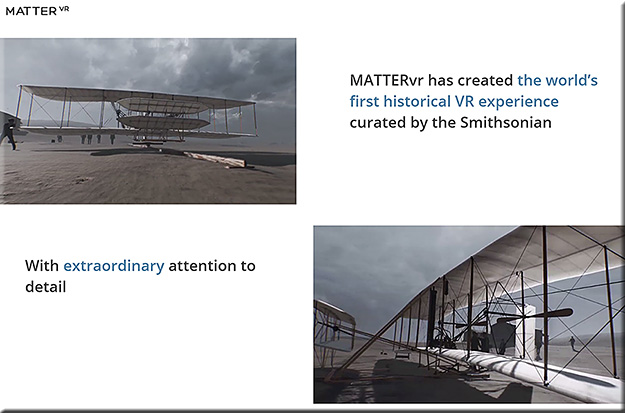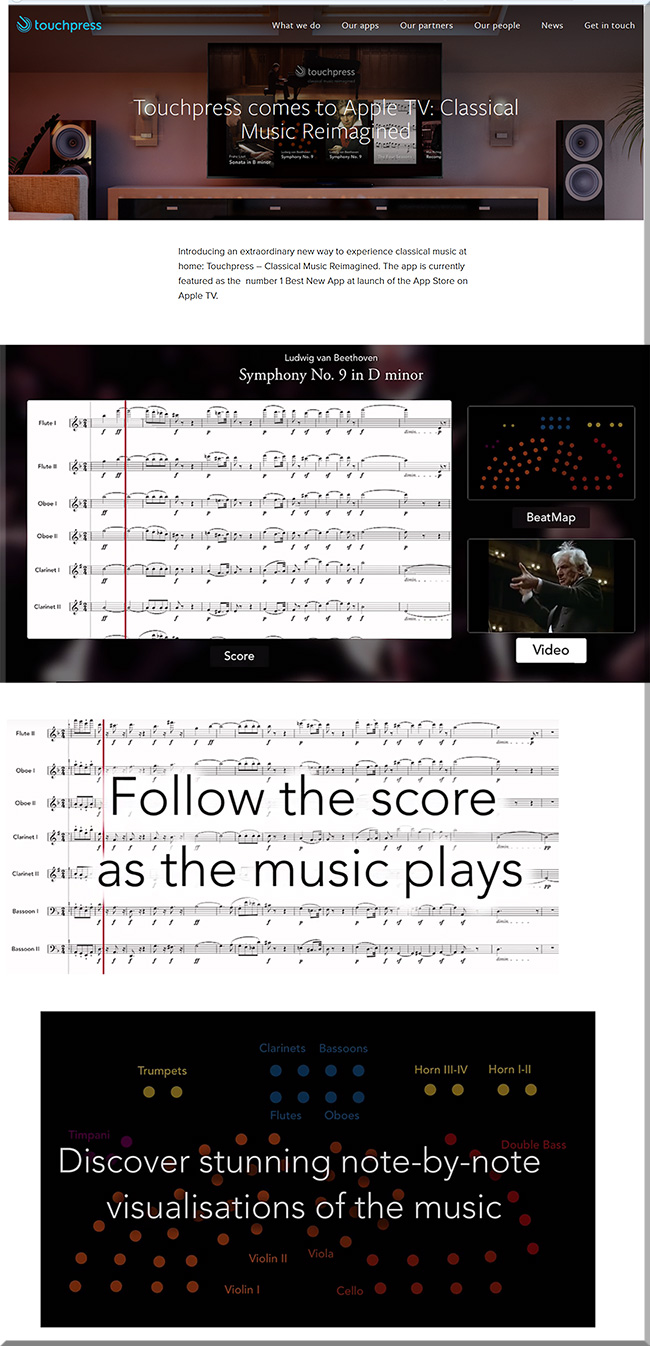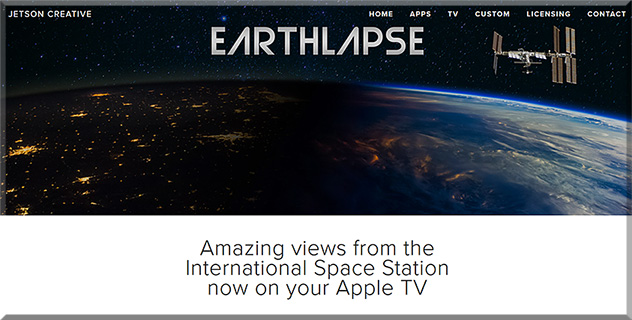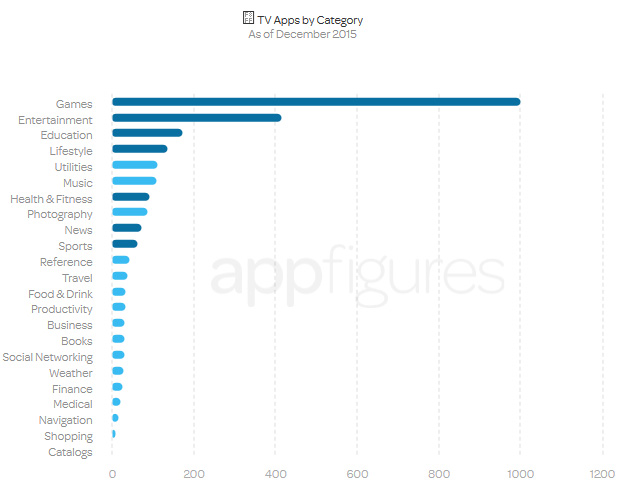#DesignInTech Report 2016 — from kpcb.com
Some excerpted slides:




Adobe’s Project Comet has been renamed ‘Experience Design’ — and it [launched on 3/14/16] — from thenextweb.com by Nate Swanner
Excerpt:
Adobe’s Project Comet is now Experience Design (XD), and is available in preview for anyone with an existing Adobe account.
Noting there are currently “lots of tools tackling many parts of the problem” of designing apps, Adobe is positioning XD to compete more directly with Sketch, and it does a fantastic job. Not only will you be able to design artboards, but XD lets you make macro changes and prototype as well.
It begins with the type of project you have (Web, iPhone, iPad or ‘custom size’ designs), but XD also has UI Kit packets preloaded. You can choose from iOS, Google’s Material Design or Windows. XD also shows you recent files so you can jump right back into prototyping.
Everything Siri can do for you and your Apple TV — from imore.com by Lory Gill
Excerpt:
When you ask Siri what it can search for, it will respond, “I can search by title, people (actor, director, character name, guest star, producer, or writer), ratings (like PG or TV-G), reviews (such as best or worst), dates (like 2012 or the 80s), age (like kid-friendly or teen), seasons, episodes, and studio. And of course, I can search by genre.”
But, what else can Siri do?
…
Siri has a fairly robust search feature with multi-layer filtering.
…
While you are watching a movie or TV show, or listening to music, you can get a little extra help from Siri. It’s like having a buddy sitting next to you — but they don’t shush you when you ask a question.
…
You can search for content in the Music app on Apple TV by artist, album, or song title. With a little know-how, you can also turn Siri into your personal deejay.
…
While you may normally look to your smartphone for your weather predictions, Siri can be just as helpful about the conditions around the world as your local weatherman or app. All you have to do is ask.
From DSC:
Following this trajectory out a bit into the future — and in light of significant developments that continue to occur with artificial intelligence, the development and use of algorithms, the potential use of web-based learner profiles (think LinkedIn.com/Lynda.com, MOOCs, the use of nanodegrees), second screen-based apps, and the like — one has to wonder:
“What are the ramifications of this for learning-related applications?!”
![The Living [Class] Room -- by Daniel Christian -- July 2012 -- a second device used in conjunction with a Smart/Connected TV](http://danielschristian.com/learning-ecosystems/wp-content/uploads/2012/07/The-Living-Class-Room-Daniel-S-Christian-July-2012.jpg)
Labster: Empowering the Next Generation of Scientists to Change the World
Laboratory Simulations for Educators to Empower their STEM Students
From DSC:
I recently met Maaroof Fakhri at the Next Generation Learning Spaces Conference. It was a pleasure to meet him and hear him speak of the work they are doing at Labster (which is located in Denmark). He is very innovative, and he shines forth with a high degree of energy, creativity, and innovation.
Keep an eye on the work they are doing. Very sharp.
Also see:
Learnathons, on the other hand are optimized sessions that teach participants how to apply what they learn as soon as possible. They are on the opposite end of how classroom teaching is organized, with lessons spread out over the course of a semester focusing on theory and weekly practice. They are a fairly new concept, but have created an environment for learning that is speeding up comprehension and application to levels that aren’t seen elsewhere.
Addendum on 3/16/16:
What are Remote Labs? <– from ilabcentral.org
Making high school science labs more real, more engaging, and more accessible
Remote Online laboratories (iLabs) are experimental facilities that can be accessed through the Internet, allowing students and educators to carry out experiments from anywhere at any time.
Introducing first ever experiences for the Microsoft HoloLens Development Edition — from blogs.windows.com by Kudo Tsunoda
Excerpt:
I am super excited about today’s announcement that the Microsoft HoloLens Development Edition is available for pre-order. We set out on a mission to deliver the world’s first untethered holographic computer and it is amazing to finally be at this point in time where developers will be receiving the very first versions so they can start building their own holographic experiences.
…
With HoloLens, we are committed to providing the development community with the best experience possible. In order to help get developers started creating experiences for HoloLens, we’ve provided a number of great resources. First of all, there is a complete set of documentation provided to developers both by the people who have created the platform and by the people who have been building holographic experiences. We want to share all of our holographic knowledge with developers so they can start bringing their holographic dreams to reality as easily as possible. We have also provided a host of tutorial videos to help people along. All of the documentation and videos can be found at dev.windows.com/holographic.
For Events & Conferences
Much more than a conference app, E-180 works with your team to transform your event into a peer-learning community, using both our matchmaking technology and the onsite presence of our professional matchmakers. Nothing is left to chance, ensuring that your attendees meet and share knowledge with the right people.
From DSC:
Currently, you can add interactivity to your digital videos. For example, several tools allow you to do this, such as:
So I wonder…what might interactivity look like in the near future when we’re talking about viewing things in immersive virtual reality (VR)-based situations? When we’re talking about videos made using cameras that can provide 360 degrees worth of coverage, how are we going to interact with/drive/maneuver around such videos? What types of gestures and/or input devices, hardware, and software are we going to be using to do so?
What new forms of elearning/training/education will we have at our disposal? How will such developments impact instructional design/designers? Interaction designers? User experience designers? User interface designers? Digital storytellers?
Hmmm…
The forecast? High engagement, interesting times ahead.
Also see:
Excerpt:
More than six billion dollars: That’s how much health care providers and consumers will be spending every year on artificial intelligence tools by 2021—a tenfold increase from today—according to a new report from research firm Frost & Sullivan. (Specifically, it will be a growth from $633.8 million in 2014 to $6,662.2 million in 2021.)
…
Computer-aided diagnosis can weigh more factors than a doctor could on their own, such as reviewing all of a patient’s history in an instant and weighing risk factors such as age, previous diseases, and residence (if it’s in a heavily polluted area) to come up with a short list of possible diagnoses, even a percent confidence rating that it’s disease X or syndrome Y. Much of this involves processing what’s called “unstructured data,” such as notes from previous exams, scan images, or photos. Taking a first pass on x-rays and other radiology scans is one of the big applications for AI that Frost & Sullivan expects.
Babylon, the U.K. digital doctor app, scores $25M to develop AI-driven health advice — from techcrunch.com by Steve O’Hear
Excerpt:
Hot on the heels of PushDoctor’s $8.2 million Series A, another U.K. startup playing in the digital health app space has picked up funding. Babylon Health, which like PushDoctor, lets you have video consultations with a doctor (and a lot more), has raised a $25 million Series A round led by Investment AB Kinnevik, the Swedish listed investment fund.
Under Armour and IBM to transform personal health and fitness, powered by IBM Watson — from ibm.com
New Cognitive Coaching System Will Apply Machine Learning to the World’s Largest Digital Health and Fitness Community
IBM Watson bets $1 billion on healthcare with Merge acquisition — from techrepublic.com by Conner Forrest
[Back in August 2015] IBM ponied up $1 billion for medical imaging company Merge Healthcare. Here’s what it means for the future of IBM’s cognitive computing system.
The emergence of precision algorithms in healthcare — from Gartner
Summary:
Recent announcements that several medical institutions intend to publish extensive portfolios of advanced algorithms via an open marketplace serve as an early indicator that interest in sharing clinical algorithms is increasing. We explore the impact of this trend and offer recommendations to HDOs.
Somewhat related postings:
Holograms are coming to a high street near you — from telegraph.co.uk by Rebecca Burn-Callander
Can you tell what’s real and what’s not?
Excerpt:
Completely realistic holograms, that will be generated when you pass a sensor, are coming to the high street.
Some will be used to advertise, others will have the ability to interact with you, and show you information. In shops, when you find a shirt you like, the technology is now here to bring up a virtual clothes rail showing you that same shirt in a variety of colours, and even tell you which ones are in stock, all using the same jaw-dropping imaging we have previously only experienced wearing 3D glasses at the cinema.
Holograms, augmented reality – which superimposes technology over the real world – and virtual reality (VR), its totally immersive counterpart, are tipped to be the hot trends in retail next year. Pioneers of the technology are set to find increasingly entertaining, useful and commercially viable ways of using it to tempt people into bricks-and-mortar stores, and fight back against the rise of online shopping.

WaveOptics’ technology could bring physical objects, such as books, to life in new ways
Completely realistic holograms, that will be generated when you pass a sensor, are coming to the high street.
From DSC:
What might our learning spaces offer us in the not-too-distant future when:
Below are a few thoughts/ideas on what might be possible.
A faculty member walks into a learning space, the sensors/beacons communicate with each other, and the sections of lights are turned down to certain levels while the main display is turned on and goes to a certain site (the latter part occurred because the beacons had already authenticated the professor and had logged him or her into the appropriate systems in the background). Personalized settings per faculty member.
A student walks over to Makerspace #1 and receives a hologram that relays some 30,000-foot level instructions on what the initial problem to be solved is about. This has been done using the student’s web-based learner profile — whereby the sensors/beacons communicate who the student is as well as some basic information about what that particular student is interested in. The problem presented takes these things into consideration. (Think IBM Watson, with the focus being able to be directed towards each student.) The student’s interest is piqued, the problem gets their attention, and the stage is set for longer lasting learning. Personalized experiences per student that tap into their passions and their curiosities.
The ramifications of the Internet of Things (IoT) will likely involve the classroom at some point. At least I hope they do. Granted, the security concerns are there, but the IoT wave likely won’t be stopped by security-related concerns. Vendors will find ways to address them, hackers will counter-punch, and the security-related wars will simply move/expand to new ground. But the wave won’t be stopped.
So when we talk about “classrooms of the future,” let’s think bigger than we have been thinking.

Also see:
What does the Internet of Things mean for meetings? — from meetingsnet.stfi.re by Betsy Bair
Excerpt:
The IoT has major implications for our everyday lives at home, as well as in medicine, retail, offices, factories, worksites, cities, or any structure or facility where people meet and interact.
…
The first application for meetings is the facility where you meet: doors, carpet, lighting, can all be connected to the Internet through sensors. You can begin to track where people are going, but it’s much more granular.
…
Potentially you can walk into a meeting space, it knows it’s you, it knows what you like, so your experience can be customized and personalized.
…
Right now beacons are fairly dumb, but Google and Apple are working on frameworks, building operating systems, that allow beacons to talk to each other.
Addendum on 1/14/16:
Expand your vocabulary with Elevate Showdown on Apple TV — from appadvice.com by Jeff Byrnes
Excerpt:
Compete to expand your vocabulary
With Elevate Showdown, you race to match words to descriptions, playing against your friends in group mode using a custom Apple TV controller app, or versus competitors from around the world with Game Center integration. In group mode, you can play against up to three other people, while Game Center pits you head-to-head with a competitor.
10 must-have Apple TV apps — from pcmag.com by Jordan Minor
Enjoy the App Store experience on your television with our Apple TV app starter set.
Excerpt (some example apps):
You can now explore 360-degree videos on Apple TV, no VR headset required — from fastcompany.com by Peter Wade
With a new app by Disney-backed virtual reality firm Littlstar, Apple TV users can access the platform’s library of 360-degree videos.
Related item:
Littlstar is the first to bring immersive 360 video to Apple TV — from twinkle.littlstar.com
Excerpt:
New York, NY – December 22, 2015 – Littlstar, the premier global network dedicated to virtual reality and 360 video, today announced the launch of its Apple TV app. The app, which is the first to bring immersive content to the new Apple TV platform, gives users access to a wide range of 360 video content from well-known brands.
Everything you need to know about the new Apple TV App Store — from blog.appfigures.com
Excerpt:
App showdown: Roku vs. Chromecast vs. Apple TV vs. Fire TV vs. Android TV — from macworld.com
The tech that will change your life in 2016 — from wsj.com by Geoffrey A. Fowler and Joanna Stern
Gadgets, breakthroughs and ideas we think will define the state of the art in the year ahead
Excerpts:

Technology trends 2016 — from thefuturesagency.com by Rudy de Waele
Excerpt:
It’s this time of the year again for everyone in the business to release their yearly predictions. In order to save you some time, we collected all the most important and relevant trends – from the sources that matter, in one post.
The trends have been collected by The Futures Agency partner, speaker and content curator, Rudy de Waele, and were originally published on the shift 2020 Brain Food blog and newsletter.
CES 2016: Smart homes, smart cars, virtual reality — from cnbc.com by Harriet Taylor
Excerpt:
Nevertheless, there are still some distinct themes this year: Products that highlight the so-called Internet of Things (IoT), the connected home, autos and virtual reality will all have a big presence.
From smart to intelligent: 2016 AV trends — from avnetwork.com by Jonathan Owens
Excerpts:
Cloud, virtual reality among top tech trends for 2016 — from news.investors.com by Patrick Seitz
Excerpts:
Virtual reality, robot companions and wraparound smartphones: Top 5 tech trends due in 2016 — from scmp.com by Jack Liu
The headset cometh: A virtual reality content primer — from gigaom.com by Megan Logan
Excerpt:
When we talk about VR, we tend to talk in broad strokes. “Experiences,” we call them, as if that term is somehow covers and conveys the depth and disparity that exists between gaming, watching, and interacting with VR content. The reality of virtual reality, however, is not so easily categorized or described.
VR content is the big blanket term that clumsily and imprecisely covers large and vastly divergent portions of the content market as it stands. VR games, immersive video, and virtual cinema all fall under “VR content”, but they’re fundamentally different experiences, possibly appealing to very different portions of a potential mainstream VR market.
6 ways work will change in 2016 — from fastcompany.com by Jared Lindzon
Workplace trends for 2016 will be set in large part by what’s happening in the freelance world right now.
Excerpt:
Most major workplace trends don’t evolve overnight, and if you know where to look, you can already witness their approach.
Many of the trends that will come into focus in 2016 already exist today, but their significance is expected to grow and become mainstream in the year to come.
While such trends used to be set by the world’s largest companies, today many are championed by the smallest. Freelancers and independent employees need to stay ahead of future needs to ensure they are up to date with the most in-demand skills. Therefore, activity in the freelance market often serves as an early indication of the growing needs of traditional businesses.
At the same time, large organizations today are under greater threat of disruption, requiring early adoption and a heightened awareness of the surrounding business environment.
Here are some of the workplace trends that are expected to have far-reaching effects in 2016, from the boardrooms of Fortune 500 companies to the home offices, cafes, and coworking spaces of the freelance economy.
7 top tech trends impacting innovators in 2016 — from innovationexcellence.com by Chuck Brooks
Excerpts:
Related:
Addendum on 1/13/16:
From DSC:
Listed below are some potential tools/solutions regarding bringing in remote students and/or employees into face-to-face settings.
First of all, why pursue this idea/approach at all?
Because schools, colleges, universities, and businesses are already going through the efforts — and devoting the resources — to putting courses together and offering the courses in face-to-face settings. So why not create new and additional revenue streams to the organization while also spreading the sphere of influence of the teachers, faculty members, trainers, and/or the experts?
The following tools offer some examples of the growing capabilities of doing so. These types of tools take some of the things that are already happening in active learning-based classrooms and opening up the learning to remote learners as well.
Eventually this will all be possible from your living room, using morphed
versions of today’s Smart/Connected “TVs”, VR-based devices, and the like.
————————
Excerpts from their website:
ThinkHub Demo: MultiSite Collaboration
Then there are tools that are not quite as robust as the above tools, but can also bring in remote learners into classroom settings:
Double Robotics Telepresence Robot
…and there are other telepresence robots out there as well.
Some other somewhat related tools/solutions include:
Vaddio RoboSHOT PTZ cameras
The RoboSHOT 12 is for small to medium sized conference rooms. This model features a 12X optical zoom and a 73° wide angle horizontal field of view, which provides support for applications including UCC applications, videoconferencing, distance learning, lecture capture, telepresence and more.
The RoboSHOT 30 camera performs well in medium to large rooms. It features a 30X optical zoom with a 2.3° tele end to 65° wide end horizontal field of view and provides support for applications including House of Worship productions, large auditorium A/V systems, large distance learning classrooms, live event theatres with IMAG systems, large lecture theatres with lecture capture and more.
6 top iPad collaboration apps to bring remote teams closer together — from ipad.appstorm.net by Nick Mead
From DSC:
Back in July of 2012, I put forth a vision that I called Learning from the Living [Class]Room.
It’s a vision that involves a multitude of technologies — technologies and trends that we continue to see being developed and ones that could easily converge in the not-too-distant future to offer us some powerful opportunities for lifelong learning!
Consider that in won’t be very long before a learner will be able to reinvent himself/herself throughout their lifetime, for a very affordable price — while taking ala carte courses from some of the best professors, trainers, leaders, and experts throughout the world, all from the comfort of their living room. (Not to mention tapping into streams of content that will be available on such platforms.)
So when I noticed that Lynda.com now has a Roku channel for the big screen, it got my attention.
Lets add a few more pieces to the puzzle, given that some other relevant trends are developing quite nicely:
Anyway, these next few years will be packed with change — the pace of which will likely take us by surprise. We need to keep our eyes upward and outward — peering into the horizons rather than looking downwards — doing so should reduce the chance of us getting broadsided!
*It’s also possible that AR and VR will create
a future whereby we only need 1 “screen”

Addendum:
After I wrote/published the item above…it was interesting to then see the item below:
IBM opens Watson IoT Global Headquarters, extends power of cognitive computing to a connected world — from finance.yahoo.com
1000 Munich-based experts to drive IoT and industry 4.0 innovation
Launches eight new IoT client experience centers worldwide
Introduces Watson API Services for IoT on the IBM Cloud
Excerpt:
MUNICH, Dec. 15, 2015 /PRNewswire/ — IBM (NYSE: IBM) today announced the opening of its global headquarters for Watson Internet of Things (IoT), launching a series of new offerings, capabilities and ecosystem partners designed to extend the power of cognitive computing to the billions of connected devices, sensors and systems that comprise the IoT. These new offerings will be available through the IBM Watson IoT Cloud, the company’s global platform for IoT business and developers.
The Current State of Machine Intelligence — from Shivon Zilis; with thanks to Ronald van Loon for posting this on Twitter
Excerpt:
I spent the last three months learning about every artificial intelligence, machine learning, or data related startup I could find — my current list has 2,529 of them to be exact.
…
The most exciting part for me was seeing how much is happening the the application space. These companies separated nicely into those that reinvent the enterprise, industries, and ourselves.

Also see:
IBM Watson, Boston Children’s team on rare pediatric diseases — from medcitynews.com by Neil Versel
Excerpt:
Here’s another practical application of IBM Watson technology in healthcare: Boston Children’s Hospital is going to tap the supercomputing platform to improve diagnosis and treatment of rare diseases.
Researchers at the Harvard-affiliated hospital’s Manton Center for Orphan Disease Research will train Watson in nephrology by reading medical literature and scanning data on mutations for a kidney disease known as steroid-resistant nephrotic syndrome. They will then give Watson retrospective genomic data from patients in an effort to teach the computer to assist physicians in interpreting genome sequences as they look for abnormalities.
Wearables will see mass adoption via educated patients and digital health stores — from medcitynews.com by Shahid Shah
Excerpt:
In a fees-for-services (volume-driven) world, selling healthcare products and services to individual institutions is certainly time-consuming but reasonably straightforward. In an outcomes-driven (fees for value) world driven by shared risks and shared rewards, selling healthcare solutions across multiple disciplines, multiple stakeholders, and multiple institutions is much harder and even more time-consuming. That’s because there’s no easy buyer to identify. Population health is all the rage but our current $3 trillion + healthcare industry was never devised nor incentivized to work together as a team for long-term patient or population benefits (it’s reimbursed mainly for episodic care).
Our country’s healthcare industry is more about sick care and episodic transactions rather than longitudinal care. But, since we are moving to population and outcomes driven care where the patient is more responsible for their own care management and payment, it would seem patient education and digital health tools are more important than ever. So, perhaps we need to get together and innovate around how we’re going to present next-generation solutions from across multiple innovators and showcase them to patients and their caregivers.
Watch users claim Apple wearable improves health — from fiercemobilehealthcare.com by Judy Mottl
Excerpt:
Nearly two-thirds of Apple Watch users are exercising more often and for longer periods of time, and 72 percent claim the wearable is improving their health and fitness levels, according to a new report.
IBM forms new health data analytics unit, extends Apple partnership— from zdnet.com by Charlie Osborne
With the help of Apple, acquisitions and new partnerships, Big Blue plans to tap into the vast amount of data offered by health-tracking devices.
After medical school, IBM’s Watson gets ready for Apple health apps — from zdnet.com by David Shamah
The Watson Health Cloud – set to become an important component of Apple’s health platform – is targeting medical care, IBM says.
Excerpt:
“Watson went to medical school, and now it’s set to graduate,” said Dr Aya Soffer, director of big data and cognitive analytics at the Israel facility. “We’ve had it study the medical literature, and now it’s ready to apply its natural language processing skills to real-life applications.”
Just in time, too. Last week, IBM announced the launch of Watson Health Cloud to “provide a secure and open platform for physicians, researchers, insurers, and companies focused on health and wellness solutions”.
The platform will be used by health companies Johnson and Johnson and Medtronic, as well as by Apple. The Mac maker has its own platform and hopes to become a top health company itself. It has established a new business unit, called Watson Health Cloud, to administer the big data apps that will use Watson’s intelligent analysis and understanding of medical data.
Addendum on 11/13/15:






